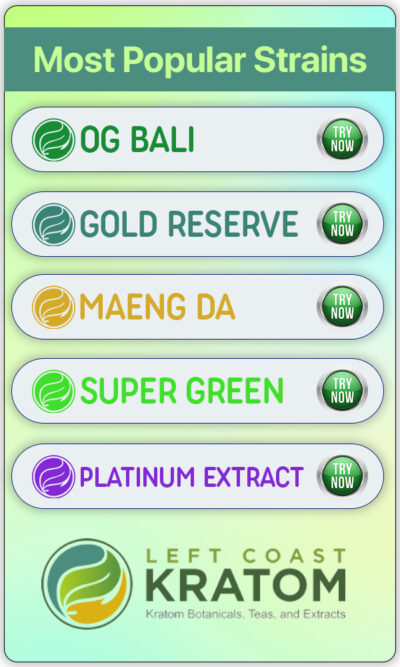Many people have had the same experience when they talk to someone about kratom in person or out loud for the first time. They find that when the person they’re speaking with says kratom, they pronounce in a way that is completely different than what they expected!
Have you ever felt awkward about how you pronounce kratom? Unsure about whether or not you are saying this unique word the right way?
It’s a common experience to have. Kratom advocates and consumers often feel self-conscious about the way that they are pronouncing the word. Since there are different opinions on what pronunciation is the right way to say kratom, it’s hard even to find out if you have it “right” or “wrong.”
What is this debate all about, and how should you pronounce kratom? Let’s talk about it!
Pronouncing Kratom: Four Methods
There are two main ways to pronounce kratom, as well as two supplemental ways that some people choose to use instead.
Long A
The first way that you will often hear Americans say kratom is with a long A sound; this will sound like KRAY-tum. This is how many will sight read the word, and that is why it is commonly seen. Many American dialects favor this type of long A pronunciation.
Short A
Another way to say kratom uses a short A sound; this will sound like KRAH-tum. Many people think that this pronunciation fits the rules of English better, and they also believe that it sounds closer to the native pronunciation of kratom.
Native Tongues
There are also people who believe that they should try to mimic the local pronunciation of kratom as it is referred to where it grows.
This means that they prefer to say something more similar to KRAH-tum or KEH-tum since ketum is a word commonly used. However, there isn’t a single way to refer to or pronounce kratom in Southeast Asia because kratom grows in a few different countries.
Even if you were to consider a single area, such as Thailand, explaining the pronunciation of a Thai word using Roman characters is not easy. While some would say that kah-tom is close to how the Thai word is said, even the “K’ sound is complicated.
Why is that?
The K-adjacent sound used in the Thai word for kratom is a guttural sound that falls somewhere between the G and the K. Explaining how to accurately pronounce this word to anyone that does not understand Thai sounds, then, is too difficult.
Science Speaks
Finally, some scientists, politicians, and advocates of kratom prefer not to use the word kratom when possible and instead use the scientific name, Mitrogyna speciosa.
While this can work in many written documents, articles, and forms, saying this long scientific phrase aloud every time you reference kratom is not going to be appealing to everyone.
The “Correct” Pronunciation
Is there a definitive answer about how kratom should be pronounced?
No. There is not, which is why the debate about which of the pronunciations discussed above should be used when talking about kratom. Within the community, most people are divided between calling it KRAY-tum or KRAH-tum. That divide is pretty evenly split, and both sides tend to feel that their own pronunciation makes the most sense.
Dictionary Says…
Some would suggest using the dictionary to decide which pronunciation is correct. Unfortunately, both KRAY-tum and KRAH-tum are listed as pronunciation options in the Oxford Dictionary, so there isn’t a final answer to be found in that source.
Locals Say…
Others say that the only way we can make the final call about pronunciation is to ask the local population where kratom grows naturally. Normally, this would be a great way to find out how a foreign word should be best and most accurately incorporated into the English language.
Unfortunately, there isn’t a single way to refer to kratom in these regions since kratom grows in a number of Southeast Asian countries. Thai uses ketum and similar words while Malay has its own words or uses kratom pronounced in the Malaysian way.
Kratom growth and cultural history are not restricted to one area or language, so relying on a single language to make the call about pronunciation isn’t possible.
Advocates Say…
The community has also suggested that we follow the example of leaders of advocacy organizations and shops on the local level as a way to standardize the pronunciation. Even within these groups and shops, however, people use both KRAY-tum and KRAH-tum, so there isn’t an answer to be found here.
So What Should I Say?
Saying kratom with either a long or short A is okay; stick with whatever is most comfortable for you. If many people in your local community tend to favor one pronunciation, it might be best to shift to their version to remain consistent when talking with your community at large.
There is no standard pronunciation at this time. Until the community decides that it is necessary to unite around one pronunciation, continue to use whichever version makes the most sense to your mouth and your brain.
Moving Forward With Kratom
If this is a debate that you have gotten caught up in, it’s probably best to move on towards other things for now. There isn’t a singular way to pronounce kratom that is more correct than others, even if some people do have strong preferences.
The fact of the matter is that at this point in time, people are going to continue to say the word kratom in different ways. That’s not a big problem, so you shouldn’t let this debate get to you. Continue to say kratom however you want, and through your influence, those around you might convert to your way of saying it as well.
Beyond that, there are other things to focus on in the kratom industry that are more worth discussion and debate. Let’s focus on moving forward with kratom and not getting caught up in the minor details!


